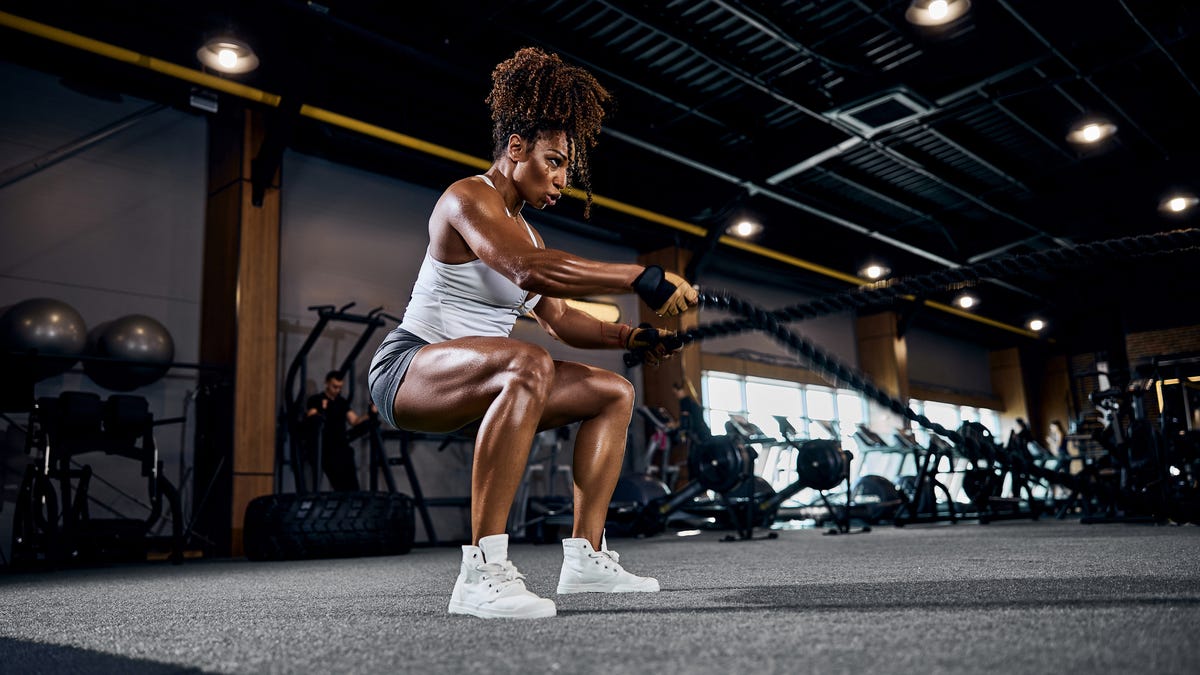Travel
Baby’s First ‘Baby Botox’

Growing up in the early 2000s, I remember a feminist backlash against Botox: “Why are we injecting ourselves with neurotoxins to pander to the beauty standards of the patriarchy?”
As a queer woman, attracting men isn’t a priority, but I am just as vain as the next gal, hetero or otherwise. In 2024, we now have a pervasive “feminism is about women doing whatever the fuck we want” ethos that echoes the neutered punk-rock tone of a sassy fridge magnet. (“It’s wine o’clock somewhere.”) On the verge of 30, I’m just now committing to a skincare routine while 10-year-olds are clearing out the retinol from Sephora. I remember how grown-up I felt in 6th grade when I started washing my face with St. Ives Apricot Scrub. It left my skin parched and irritated, but I still miss the smell of it sometimes.
It makes me feel lazy and unintellectual not to have a strong opinion about cosmetic intervention, but I really think it’s just not that deep—youth is currency, and we’ve been chasing that sorcerer’s stone since the beginning of time. When I inform my friend of my imminent Botox appointment, she says, “Oh, really? Well, of course, you can do whatever you want. I just prefer to age naturally.” Okay, Pollyanna. On the other side of the spectrum, I once worked with a 23-year-old intern who had been getting “preventative Botox” since she was 19—her parents were loaded, so what was stopping her?
However you feel about the ceaseless march of time, we indisputably live in an anti-aging culture, and Los Angeles is the frontline of the cosmetic crusade. All things considered, when I’m offered free Botox in exchange for my thoughts on the experience, I say, “Hey, free is free.”
So here I am, with just the perfect amount of dainty lines to preserve so I can look youthful yet sentimental forever. (Or at least for the next six months, as this isn’t really a habit I can afford.) As I drive towards my appointment on the west side, I look forlornly at my forehead in the rearview mirror like a dog I’m bringing to the vet. I generally lean deadpan, but I start to pre-grieve the loss of my expressive range. At each stop light, I do a round of acrobatics with my eyebrows, taking note of my abilities so I can track the progression of the freezing process. I make a mental list of impending gains and losses:
Here I am, with just the perfect amount of dainty lines to preserve so I can look youthful yet sentimental forever. (Or at least for the next six months.)
Gains
- Eternal youth (obviously).
- I’d read in some girlbossy blog that smiling can trick the brain into thinking it’s happy. Maybe without the ability to furrow my brow, I can trick my brain into a state of eternal nonchalance?
- I will be less tempted to get bangs.
Losses
- I will have to retire my Jack Nicholson impression.
- I can no longer punctuate an insult with a slight raise of a single eyebrow.
- There is a small chance that the Botox will travel to an eyelid, giving me that broken baby doll half-wink look for months.
- If I like it, I will eventually have to pay for it.
I arrive at Facile on Melrose Place at 3 p.m. The technician assistant takes me into a room where I fill out my paperwork on an iPad, including mandatory selfies. (I find out later that this is because people will come in post-procedure to point out asymmetries, and the photos are proof that they were there to begin with.) Dr. Nancy Samolitis, a.k.a. Dr. Sam, enters the room and takes a few additional photos on the iPad. “Look surprised,” she directs behind the camera like an audition. My eyebrows shoot up. “Now angry.” I furrow my brow and grimace. “Well, that was more ‘scared,’ but we can work with that.” We sit down, and she examines my forehead. Almost reflexively, I stare at her forehead as well, and for the rest of the conversation, I can tell our eyes keep toggling from eyes to forehead, hyperconscious of each other’s movements. She says I am a prime candidate for preventative Botox. “Baby Botox,” as it’s fondly called.
Dr. Sam explains the origin story of Botox with a capital “B.” The active ingredient in Botox—as well as other popular name brands on the market like Daxxify—is a neurotoxin called “botulinum toxin.” “That’s the one that causes botulism, right?” I ask because I have a years-long fascination with the failed Franklin expedition in 1845, where two ships became icebound, and the sailors—suffering from botulism and lead poisoning from poorly preserved food—descended into madness and cannibalism as they waited in vain for rescue. “It’s the same neurotoxin, but it’s not like botulism at all,” she swiftly corrects me.
Not as much drama, but I’ll take it. The botulinum toxin was originally employed in an experiment by an ophthalmology physician and a dermatology physician (a married couple—cute!) to treat eyelid spasms. As a side effect, they noticed a smoothing of wrinkles on the side of the face where they made the injections. She clarifies, “The toxin in Botox binds to a receptor in the nerve ending that prevents the nerve from communicating with the muscle, so it relaxes muscles.”
Dr. Sam tells me how the drug has been used off-label since the mid-’90s before it got approved by the FDA in 2003. She experimented with it herself in the ’90s before they had finessed the art of targeting specific muscle groups. With injections directly above her eyebrows, it weighed her brow down in a Neanderthal-like fashion. She remarks on my strong brow muscles, saying she won’t repeat the same mistake and instead will target the muscles above. “It is a bit addictive in a way. It makes the brows look lifted. You should look rested. It’s super subtle, but people get addicted to the way they look.” I ask her about aftercare since I’d gotten some armchair advice from a hairdresser the week before: don’t exercise, don’t lie down, don’t go on an airplane, etc.
From the recommended age to get it (our nature and nurture leave this all up to chance) to its lifelong effects, Botox appears to still be in something of an improvisational phase—cosmetic jazz.
“Look,” she begins, already hinting at the spread of mythologies, “I’ve had clients that go straight to the gym after. I’ve had clients that get right on a plane. Some people tell you to exercise your forehead muscle to increase absorption into the muscle—they call them ‘scrunches.’ But again, nobody knows if that’s effective.” Dr. Sam says she wouldn’t recommend lying face down on a massage table right after the injections, but otherwise, most rules are over-cautious and unproven. Botox seems like more of an intuitive science than I once imagined. From the recommended age to get it (our nature and nurture leave this all up to chance) to the aftercare to its lifelong effects, Botox appears to still be in something of an improvisational phase—cosmetic jazz.
The procedure itself takes just a few minutes, around 10–15 pinpricks in some strategic spots to freeze my muscle groups in the most flattering positions. Dr. Sam tells me I will see the full effects in two weeks, although some people feel it in a few days. In my car, I perform my “scrunches” in the rearview mirror. Over the next few days, I forget about it entirely. That weekend, I take a few too many mushrooms before the Renn Faire and, in a panic, start tearing off my chainmail headpiece, saying, “Oh my god, I can’t feel my forehead.” My friend gently reminds me, “You got Botox, honey.” Oh.
Within ten days, my eyebrow dexterity weakens. On day 14, the muscle memory is there but with none of the follow-through. Trying to raise an eyebrow feels like those nightmares where you try to punch someone, but your arm is too weak to lift. With great effort, I can summon an expression of modest surprise.
Looking in the bathroom mirror that night, my skin looks smooth and undisturbed by emotion, the brows ever-so-slightly lifted. I wash my face, applying a generous layer of my new Star Flower serum from Saint Jane. Dr. Sam said there is a very short list of things that can actually rejuvenate aging skin, but niacinamide makes the cut. The pearly little hyaluronic beads in the formula convince me of its scientific prowess, so I trust it implicitly with my finicky skin barrier. After cleansers, exfoliants, serums, moisturizers, and balms, my image has slightly softened, like when a bit of Vaseline is applied to a camera lens.
With my face sufficiently embalmed in layers of product, I tuck myself into bed. I put on my eye mask and punch the feathers in my pillow under my neck. I remember watching an interview with Fran Drescher from the ’90s when late-night hosts were still allowed to ask women how they stay so hot. She gave two pieces of advice, “Sleep on your back since 90 percent of wrinkles you get from your pillow,” and “Keep your butt lifted by doing isometric exercises.” She claimed any time she was just sitting around, she was almost always clenching her buttcheeks together. Whenever I remember it, I reflexively clench, just as you probably are now reading this. So here I am, laying on my back, hands folded like King Tut, desperately clinging to my youth with the feeble force of my buttcheeks. My mother used to caution: youth is wasted on the young. I’d always believed that was in reference to the effortless beauty of youth, but I think our generation has found a whole new way to forfeit the luxury of our carefree days.










